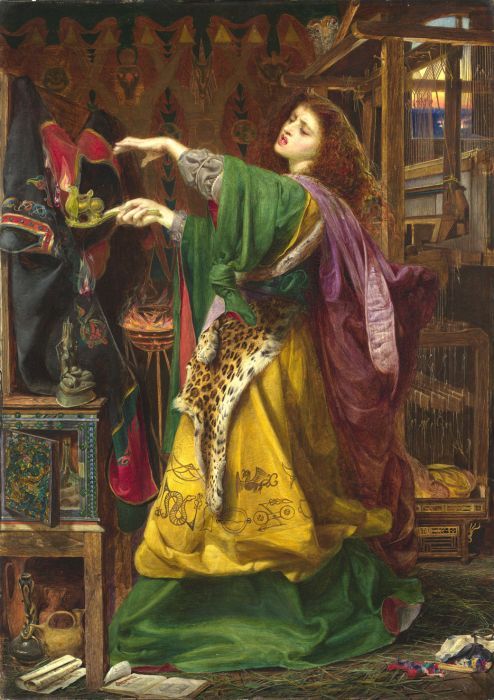#legitimizing power through myth
The Sacred Twenty Eight: The Noble and Most Ancient House of Black
Three sisters: Morgana, Morgause and Elaine of Garlot. One dark, one brown, one fair. Three sisters: Bellatrix, Andromeda and Narcissa. One a warrior, one a rebel, one entirely unexceptional.
Of all the houses of the Sacred Twenty-Eight, the Blacks were the only ones who could trace their descent to an ancient royal family, canonized in both myth and legend. There were those who were openly skeptical that a wizarding family could claim to be related to Arthur, King of the Britons and his three half-sisters; Morgana, Morgause and Elaine of Garlot - such a claim, they said, was far too exaggerated and could never be proven (for none were allowed to see the Black family tapestry but the Blacks themselves). But most agreed - out of fear and awe - that the Blacks indeed were children of these great sorcerers.
For how could they dispute it when all the portraits of these mythical figures seemed to live again in the faces of the Blacks striding alongside them in the Ministry, studying at Hogwarts, holidaying with them in the South of France?
But if those concerned with the veracity of this outrageous claim had bothered to dig through records held in the Department of Mysteries - held purely for historical purposes, of course - they might have found a series of bills and commissions to various unknown artists and artisans of the early 11th century. Of early tapestry-weavers instructed to portray their patrons as characters from Arthurian legends - else face death (how wonderful those ancient times were, where the missing poor prompted no visits from the Auror department). Of mosaics and etchings presented to this family; all the children of the Lady Igraine shown with the high cheekbones, dark hair and pale faces particular to the Blacks. Of portraits and paintings and landscapes - all in the grand tradition of the rich families of those times. In time, any traces of the original Arthur and his half-sisters were lost and all the artworks concerning the Arthurian legends - even among the muggles - came to assign each character the same face over and over again; pale skin, dark hair (sometimes light for Elaine of Garlot was a fair young maiden), high cheekbones: trademark of the Black family.
And yet these records would mean nothing, not even in a history textbook, not after all this time. For who could say, after all these centuries, that the Blacks were not descended from Arthur, Morgana, Morgause and Elaine?
The Blacks were not practically royalty. They were royalty.
[Paintings: Morgan le Fay by Frederick Sandys, The Magic Circle by John William Waterhouse, The Accolade by Edmund Blair Leighton
Photo Credit: Helena Bonham Carter as Morgan Le Fay (Merlin, 1998), Katie McGrath as Morgana (Merlin, 2008), Imogen Poots as Fanny Knight (Miss Austen Regrets, 2007)]
Post link






